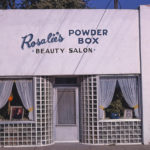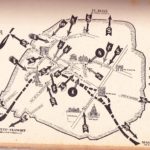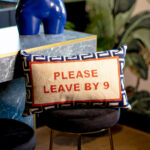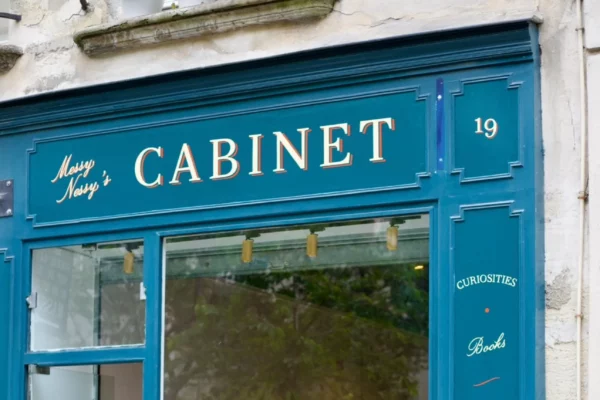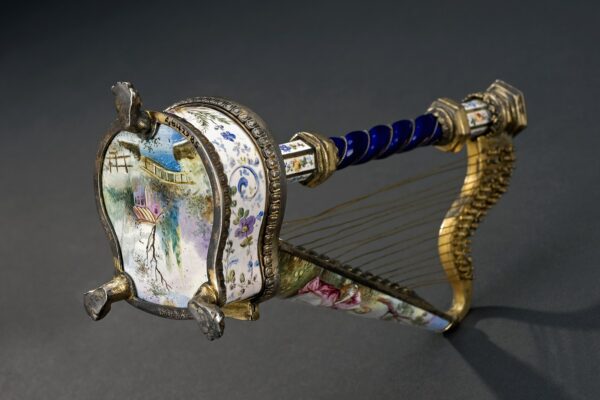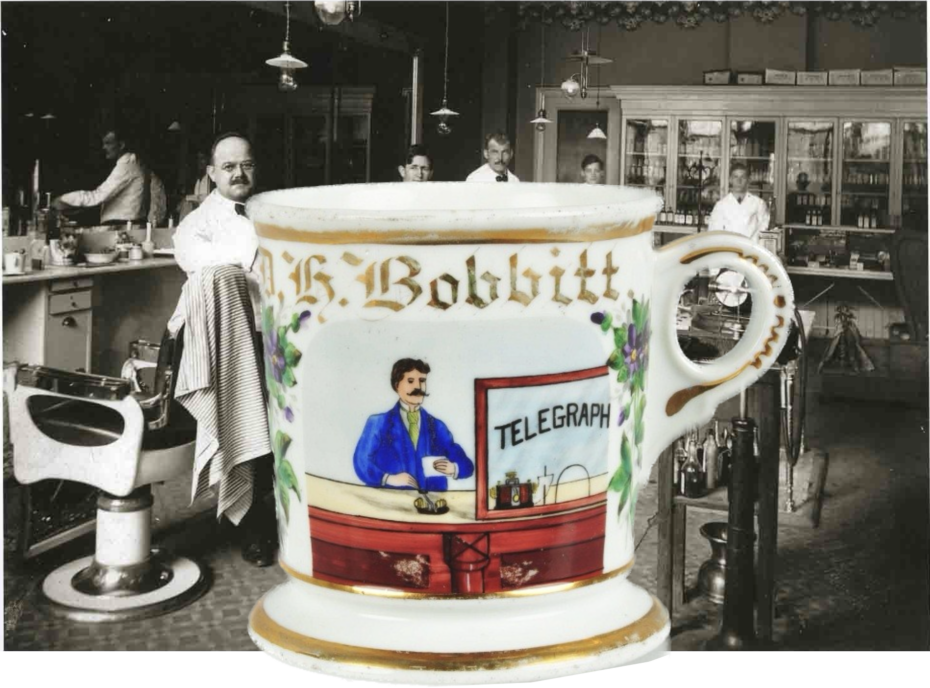
Welcome to another show & tell of collector’s curiosity objects. This week: the barbershop occupation mug. Allow us to explain; in the 19th century, and into the 20th, barbershops were a central hub for the working class man. It was where they could gather, catch up on the local gossip, and maintain their appearance of course. In the latter half of the 19th century, big beards were out, but safety razors weren’t yet invented and nor were antibiotics available, so if you cut yourself with a dirty blade it could lead to some serious health consequences. Hence, the importance of the barbershop, which men often visited several times a week, just for a shave, and considered it like their clubhouse or a fraternity, especially in working class neighbourhoods. Sometime around the 1850s, barbershops began offering customers their very own personalised shaving mugs – not provide a hot beverage during their visit, but to house a client’s soap and brush. These items were kept at the barbershop and used only for the client who owned the mug, which was thought to help prevent anything contagious being passed around between clients. They were unique to their owners and showed pride of place to other customers while maintaining good hygiene, and in our opinion, were infinitely charming.
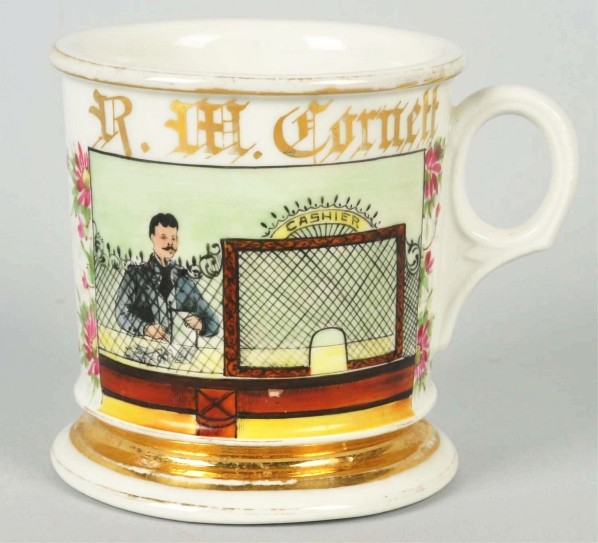
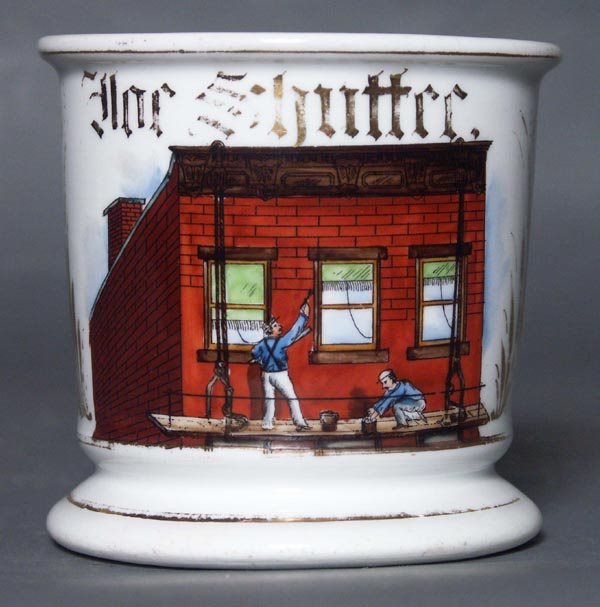
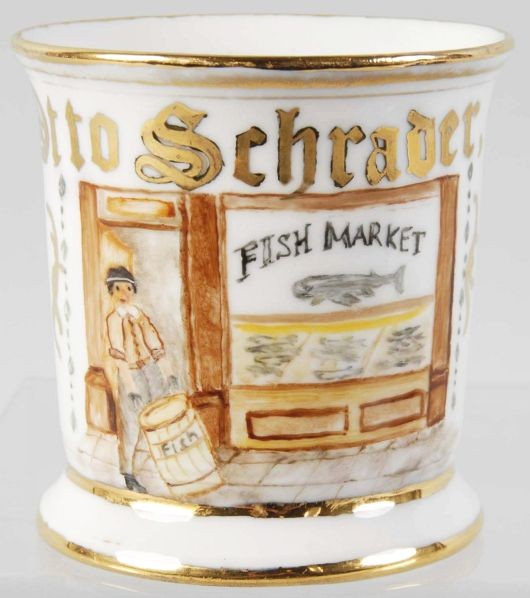
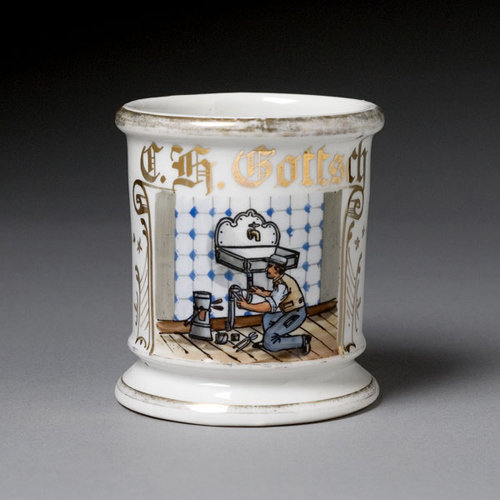
If you were to stroll into a barbershop in the second half of the 19th century, you would immediately be able to tell how popular the shop was by the amount of personalised shaving mugs on display, lined up along the walls like trophies. More mugs meant more loyal customers. Upon their first visit to the shop, a gentleman was invited to flip through catalogs with all kinds of options for their very own personal mug.
Spot the shaving mugs in the background of these old barbershop photos:
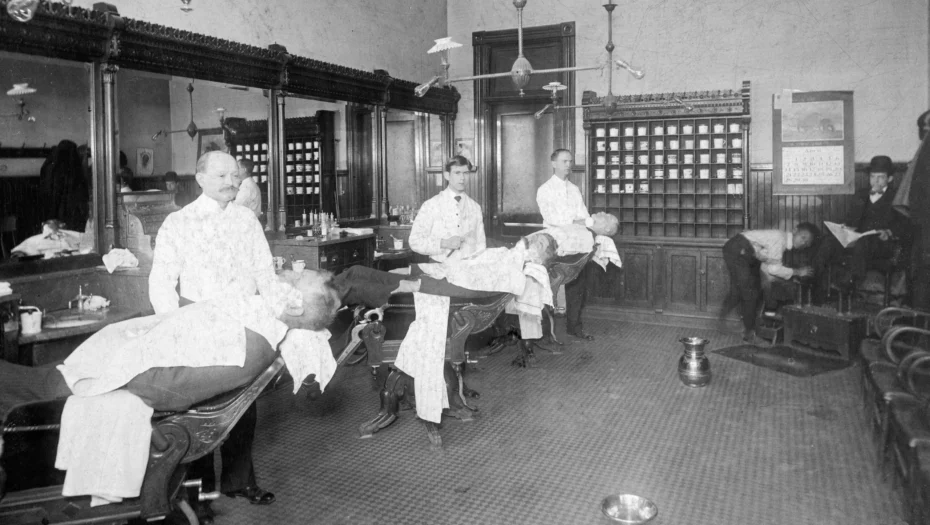
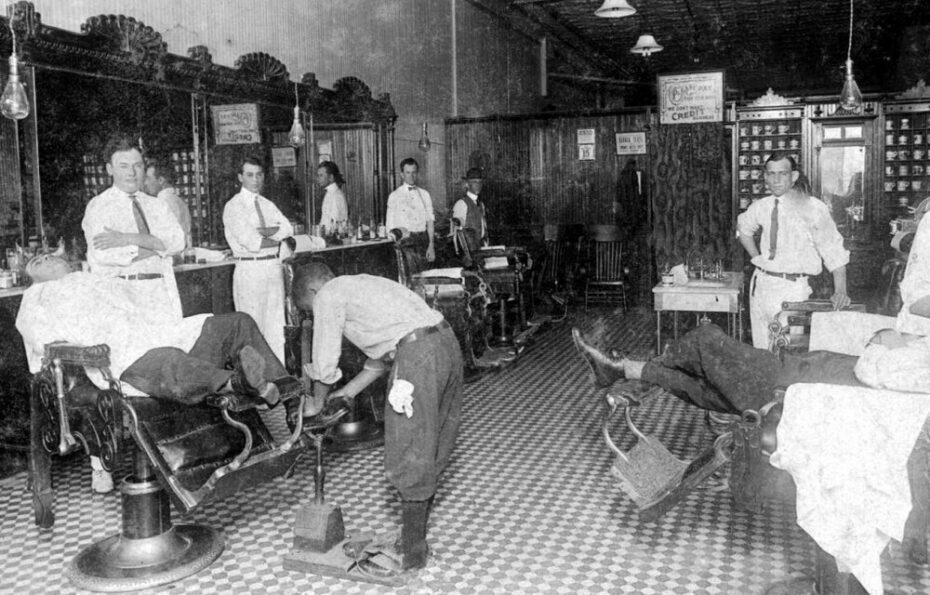
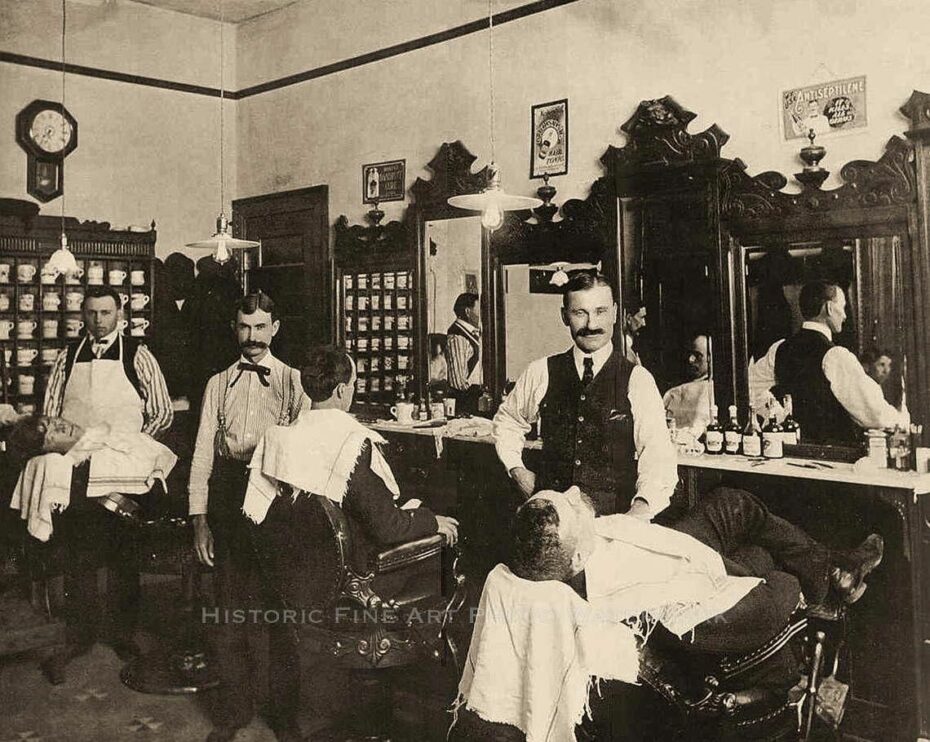
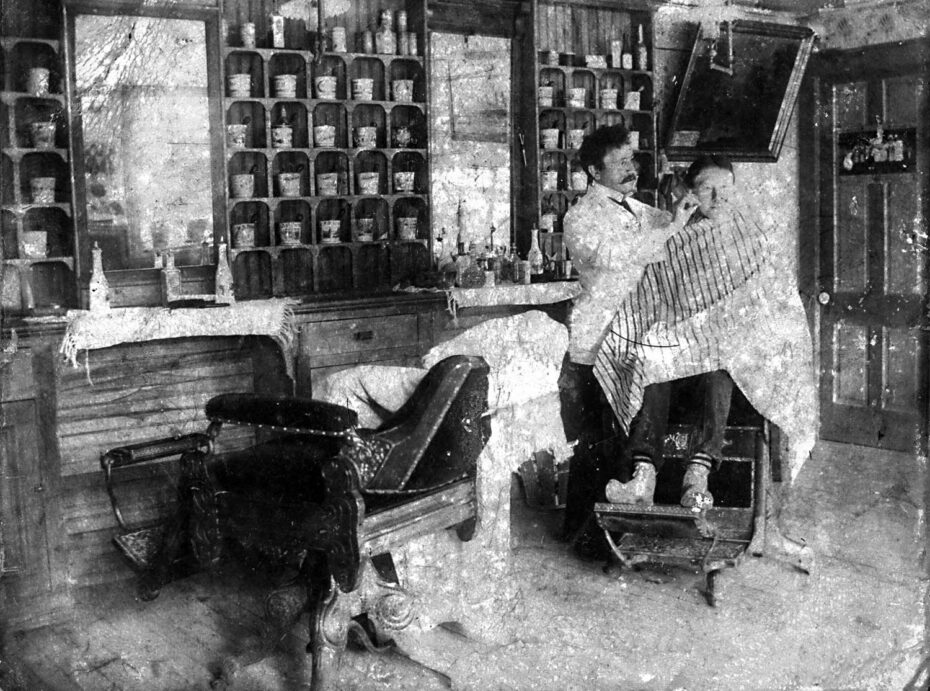
Mugs were typically made in Germany, France, or England, and then shipped worldwide and select companies would offer the customised options. One of the most expensive customisations to order was a mug that reflected the owner’s occupation of their owners, which “would cost them as much as a full day’s worth of wages”, according to Dale Fenton, a dealer of antique shaving mugs. But they could also be fairly simple, with just the customer’s name written in fine gilt script, or even just a number, which were usually used in hotels for guests passing through. Shaving mugs popular as gifts, especially for young men coming of age.
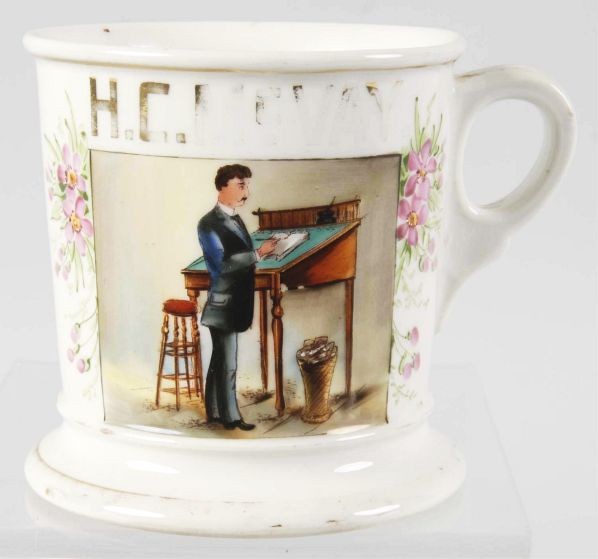
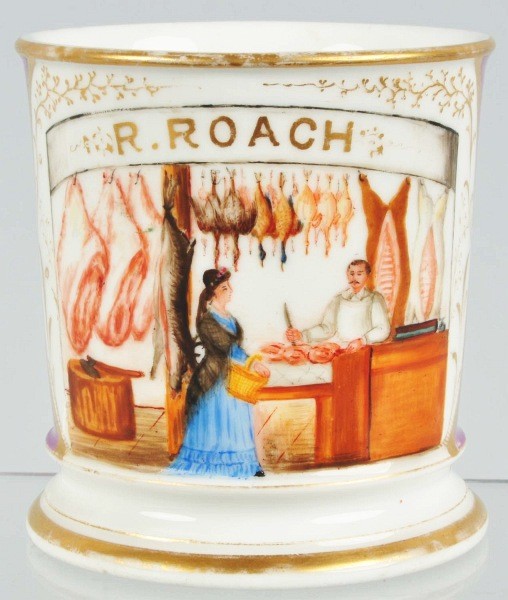
Occupational mugs however weren’t restricted to a certain class, and represented just about every occupation. The most common mugs to find as a collector are the “three B’s” as Mr. Fenton calls it; butcher / bartender / blacksmith mugs ; professions that were needed in every town. Then there were tradesmen, and finally the top tier of judges, lawyers, doctors, and wealthy businessmen who could afford more ornate mugs and might even reflect their leisurely hobbies such as baseball, snooker, cigars or proudly feature their luxury automobile, which would be handy for the barber when his customers pulled up outside the shop. Today, the occupational and ornate mugs are the most sought after, and have been sold at auction for several thousand dollars, depending on the age of the mug, the design, and the manufacturer.
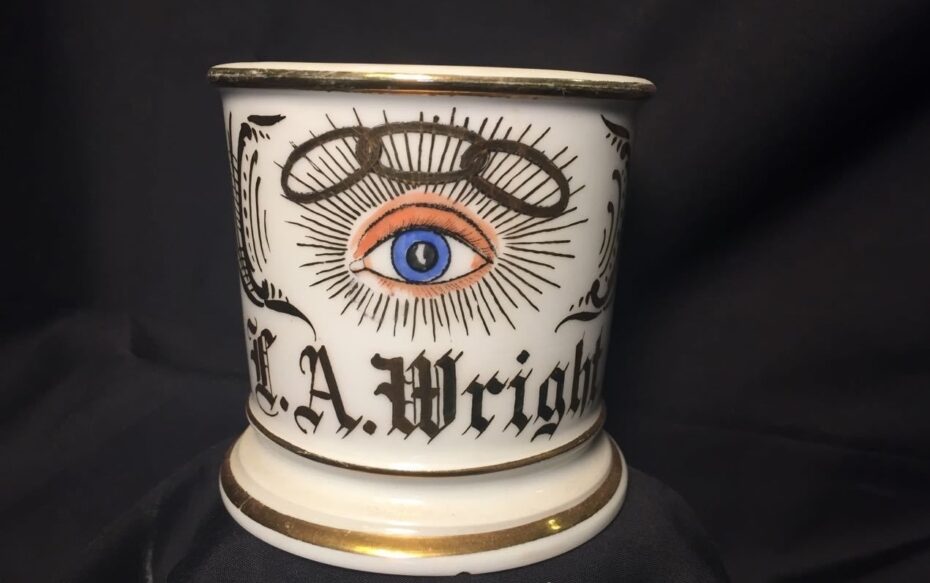
Mugs could also represent a trade union, secret society or fraternity, featuring logos or symbols, partly as an advertisement for the organisation. The Knights Templar, the Odd Fellows, Freemasons, American Legion and even the Ku Klux Klan, had their own shaving mugs. These usually came from soap companies, or other business associated with barbershops.
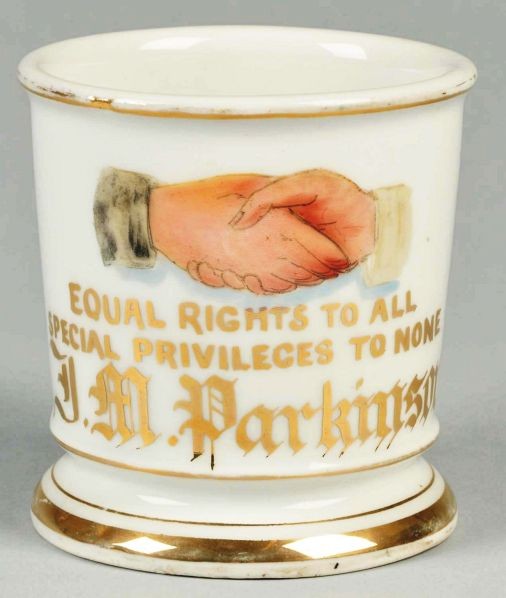
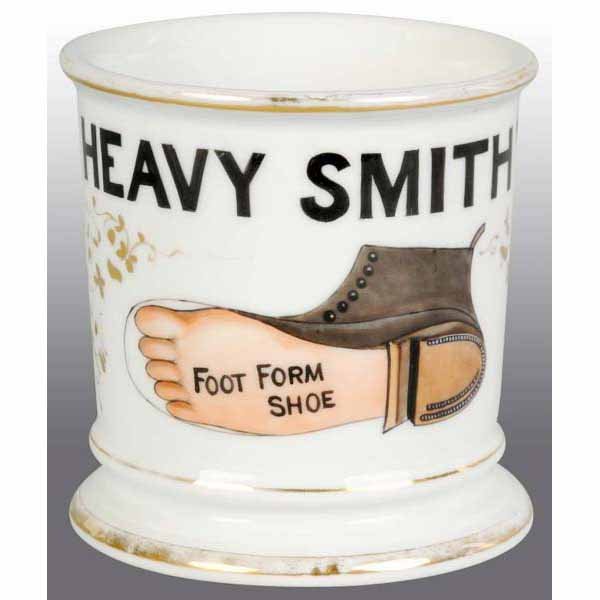
So, if you were a man who had just moved to town and visited the local barber shop, you would of course want to make yourself at home there. Your barber would hand you a catalog you would commence “designing” your mug, based on how much you had to spend and your personal preferences. First off, you would select you “blank”. A blank was the undecorated mug itself, and these were the straight, short, or standard blank. Mugs made in Europe were generally china, and mugs manufactured stateside were pottery.

Once you selected your blank, aka the general shape of your mug, it was on to the design. Wraps are the name of the background design or colour that went on the mug. These came in complete, standard, or half. After the wrap you get to add the real personalisation, which is the cartouche. The wraps would likely have included your occupation or fraternal organisation, but the cartouche is the ornate gilt lettering with your name. You’d want your mug to be as specific to you as possible, both for bragging rights, but also so that your barber knew exactly which soap and brush was yours.

Once you held your new mug in your hands, you might turn it over and glance at the bottom where you would find marks indicating an import or country of origin mark, a barber’s supply mark, or perhaps a decorators mark.
By the turn of the 20th century, the end was in sight for these mugs. Safety razors hit the market in 1903, making it much safer and easier for men to shave at home. In 1925, a company called Burma-Shave started selling pre-lathered soap, and the final death knell came after WWII when aerosol cans with shaving cream became common.
A reminder of bygone professions, let’s check out some more beauties from the amazing collection of Dale Fenton….
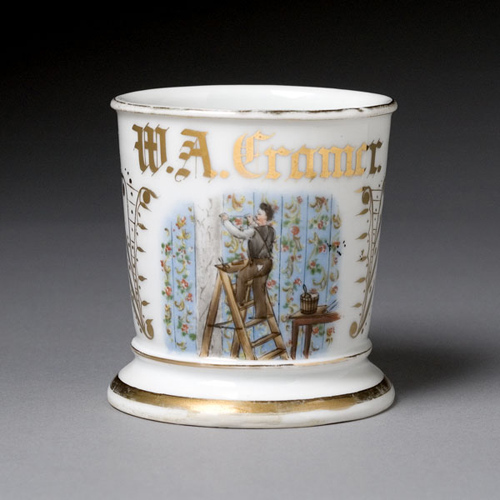
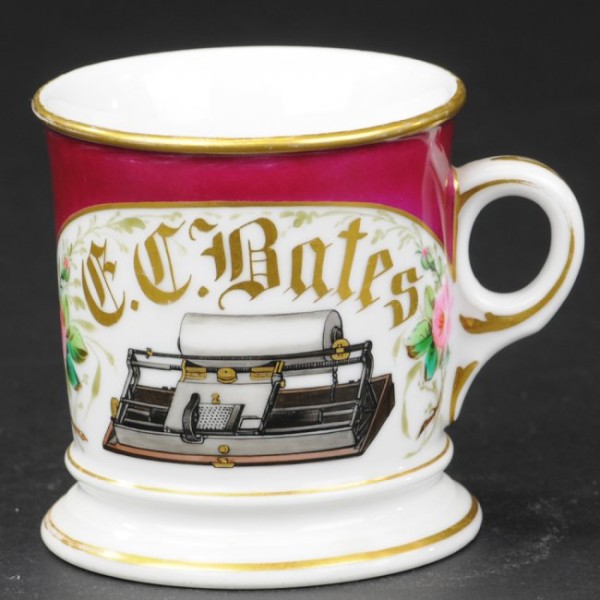
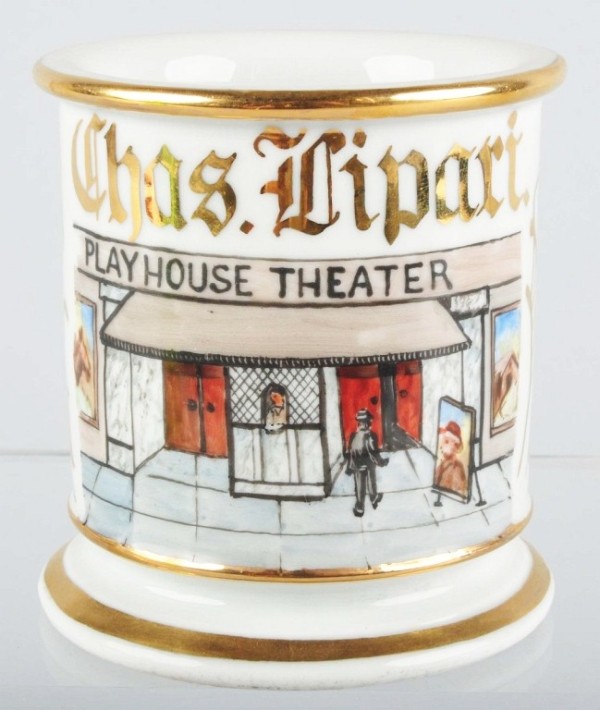
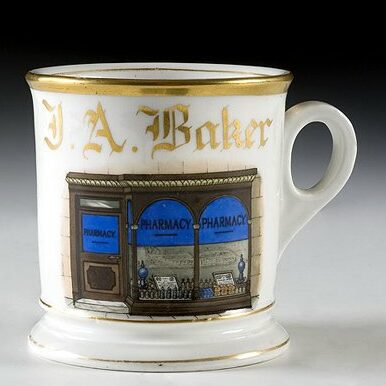
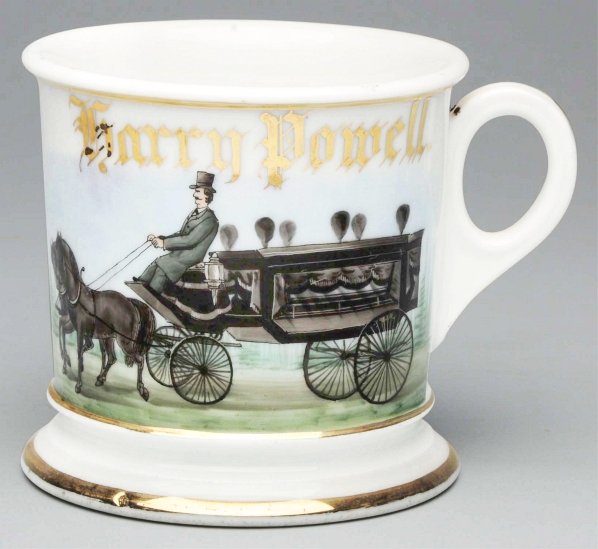
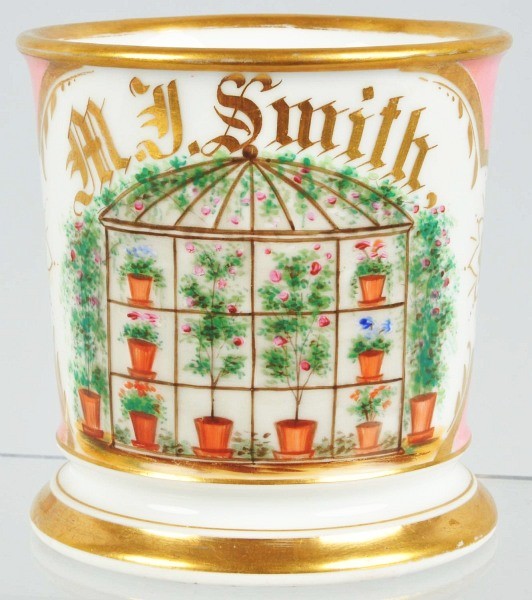
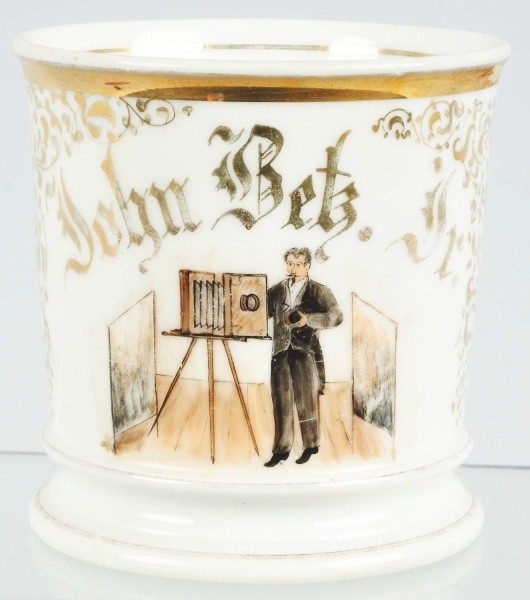
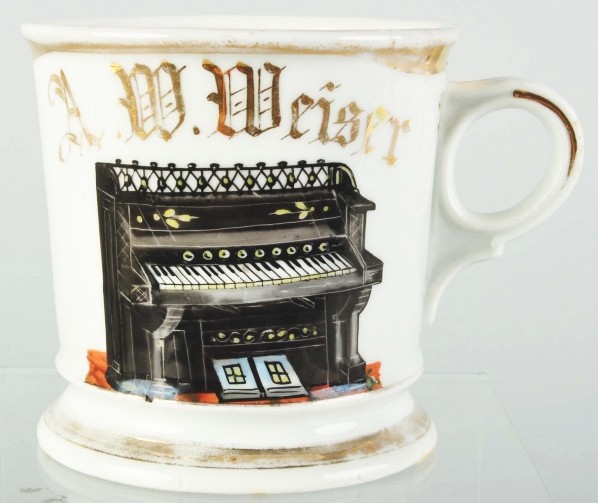
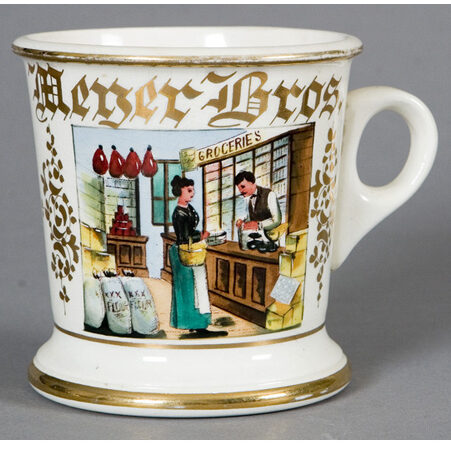
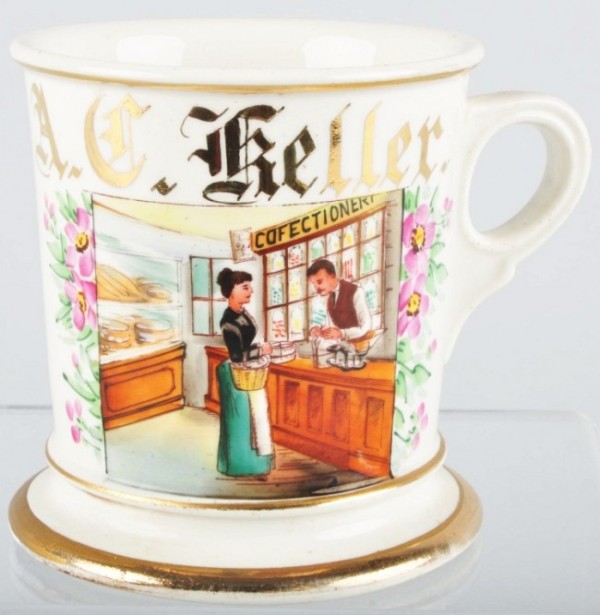
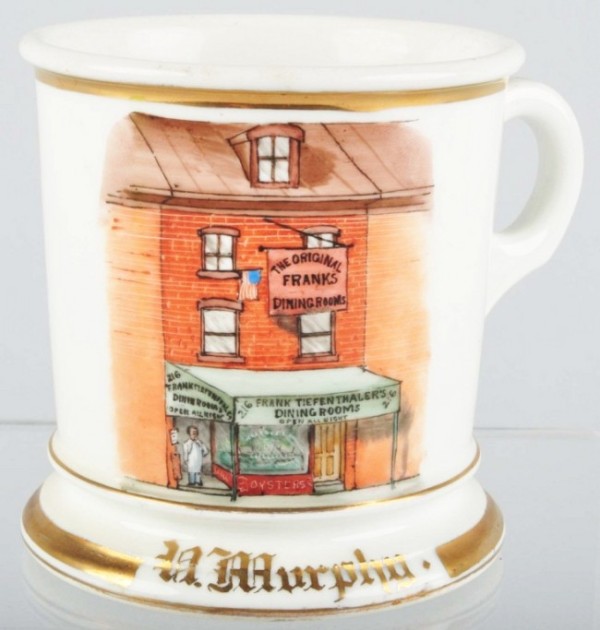
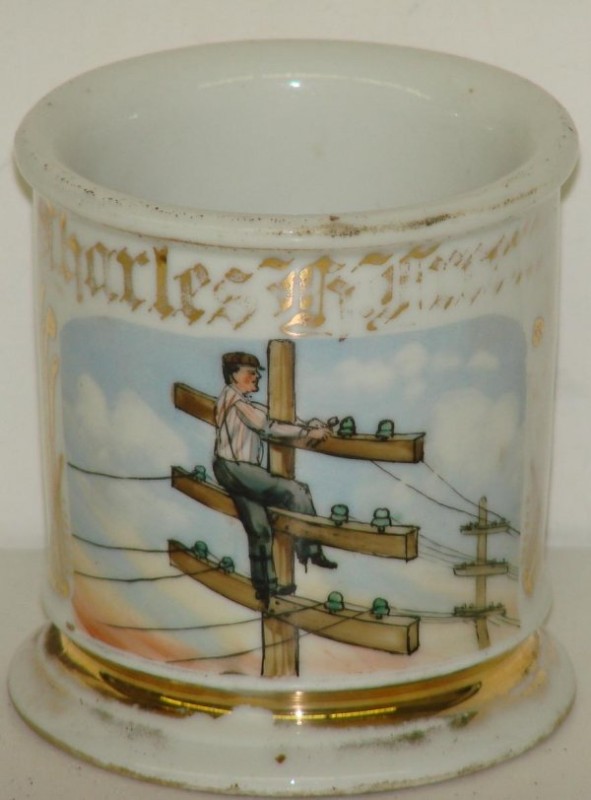
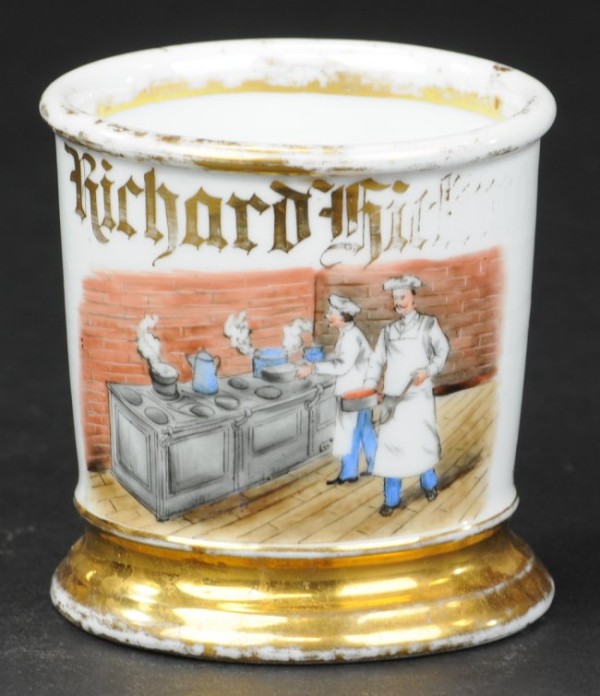
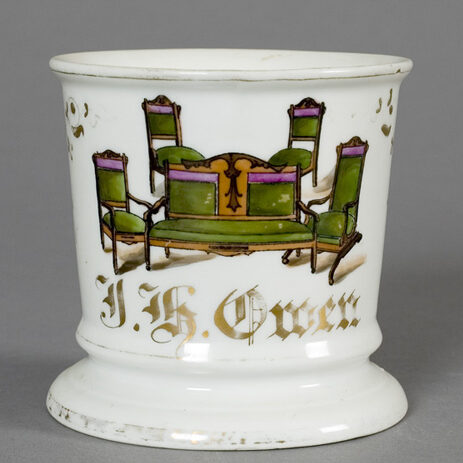
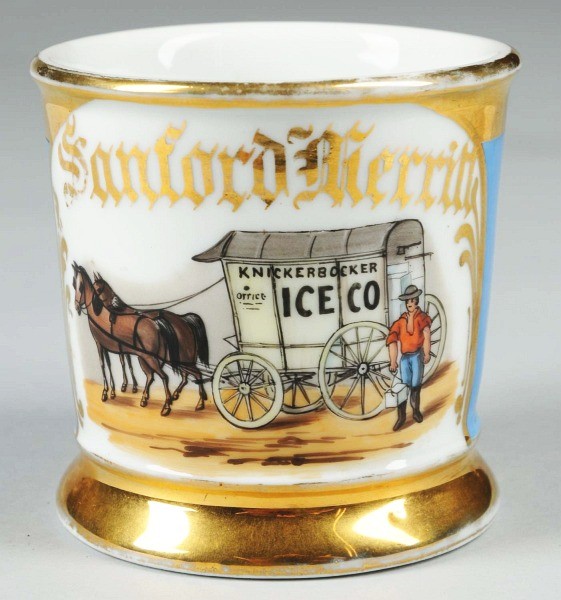
Antique shaving mugs range anywhere from $20 (the more simple gold name mugs being the most common) to $13,000 for the most ornate occupational mugs. Next time you’re at the flea, check out the china piles with a sharper eye – you might just spot one. And in the meantime, we’ll leave you with a visit to the Marvellous Barbershop Museum in England where Captain Fawcett shows off his impressive shaving mug collection, which slightly differs from the American variety.


